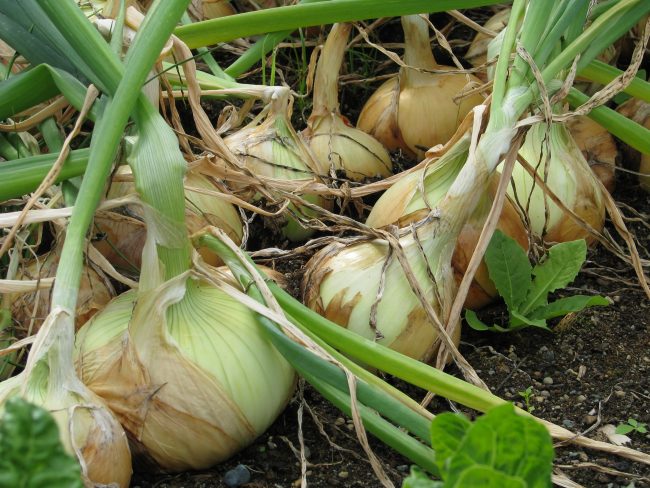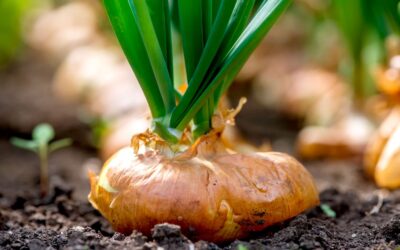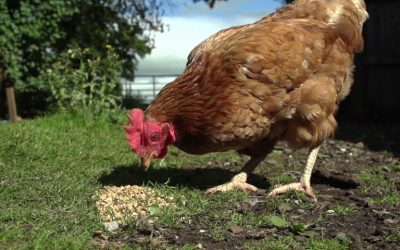Tips on growing large Onions.

If you’ve ever tried to grow large onions, you know that sometimes your gardening efforts produce small sized onions. A few of the main factors that affect onion growth are your growing zone, onion varieties and soil nutrients. Also, planting seeds rather than sets results in larger bulbs.
Stages of Onion Growth
As onion bulbs grow, they go through two stages. The first stage occurs when they grow leaves. The rings of the onion form as the leaves grow. Large leaves produce large rings. Large onions usually have about 13 rings during the first stage of growth, so this is what you’re aiming for.
The second stage of onion growth happens when the carbohydrates produced in the leaves travel to the onion rings, which results in bulb growth. Once your onion bulbs start to grow, leaves stop growing. So, growing large, healthy leaves before bulbing begins is the main factor in growing big onions.
Growing healthy leaves that produce large onions is all about choosing the best variety for your location. The first thing to do is determine which of the three types of onions you need. When choosing your onions, you want to select the variety that has the longest growing time for your area without going over how many hours of daylight you have. Select one of the following onion varieties for the maximum day length and plant them as soon as you can work the soil:
Long-day onions – These onions begin the bulbing process when the daylight reaches 14 to 16 hours.
Intermediate-day onions – These are an all-around choice for growing just about anywhere.
Short-day onions – These onions begin bulbing when you have 10 to 12 hours of daylight.
Soil Nutrients
Onions rely on nitrogen for optimum growth. Blood meal is an excellent organic source of nitrogen for growing onions. It promotes strong leaf growth and ensures continuous plant development. Nitrogen also helps increase bulb development and quality. Supplementing your garden soil with nitrogen produces higher yields of big bulbs. If your soil lacks this nutrient, you’ll notice that the onion leaves are pale and thin.

